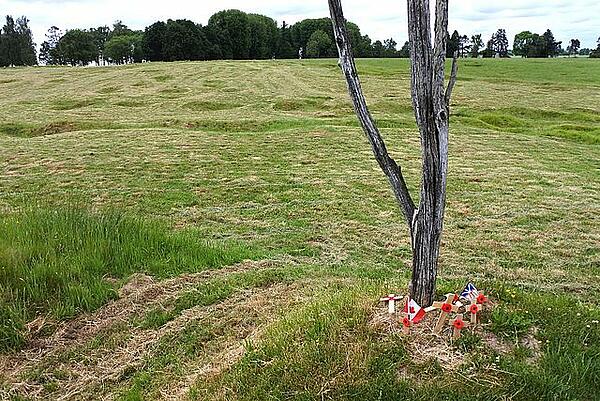Beaumont-Hamel
The fighting that took place at Beaumont-Hamel on 1st July 1916 was arguably some of the most destructive in World War One. The 1st Newfoundland Regiment is best associated with Beaumont-Hamel and the date is known as Memorial Day in Newfoundland today.
Newfoundland was not part of Canada when World War One was declared, and instead was part of the British Empire. When the declaration came on 3rd August 1914, many men in Newfoundland volunteered to fight for Britain. So many, in fact, that some were unable to get a traditional khaki uniform and had to wear blue puttees instead. As a result, the regiment was nicknamed ‘the Blue Puttees’ when they first arrived in Europe.
Before fighting in France, the regiment played a role in Gallipoli, but in the spring of 1916 they were sent to France to take part in the ‘Big Push’ in an attempt to end the war.
The 1st Newfoundland Regiment was ordered in battle at the village of Beaumont-Hamel at the start of the Battle of the Somme, and at 07:30 on 1st July a coordinated attack on the German lines began.
Unfortunately for the Newfoundland troops, the Germans were already aware that an attack was about to begin - having experienced a seven-day artillery bombardment prior to the start - and the artillery that was supposed to give the Allies the edge had failed to kill many of the Germans who were dug in underground. Once the bombardment ended, the Germans returned to their posts and awaited the predictable infantry advancement.
The 1st Newfoundland Regiment began their attack from a position behind the front lines due to the number of casualties getting in their way on the battlefield, which meant they had to move across more than 200m of open ground before they could attack. This gave the Germans the opportunity to attack in plain sight using artillery and machine guns - the 1st Newfoundland Regiment suffered horrendous losses. The only form of shelter the men could find was a single tree - now known as the danger tree - that had survived the German barrage, and it remains in the Beaumont-Hamel Memorial Park to this day.

The attack by the regiment began at 09:15 and by 09:45 many of the men were either dead or wounded. While 801 men went into battle, only 68 men were accounted for the following day.
The action of the 1st Newfoundland Regiment was recognised by a senior commander of the 29th British Division as “magnificent display of valour”. While this sentiment is appropriate, many argue it highlights the views of the seniority at the time, who saw such losses simply as part of the war process and not as a serious planning failure. So much so that the same approach was used time and again during the war, resulting in the lost of 57,000 British and Commonwealth casualties on the first day of the Battle of the Somme and 650,000 British and Commonwealth casualties in the duration of the battle.
By the end of the war, the Newfoundlanders were the only regiment that was allowed to add “Royal” to its name. Today the Memorial Park is one of the only reminders of the lives lost in just 30 minutes on that day, with the names of the men inscribed on three brass plaques at the base of the park’s memorial monument.
MLA Citation/Reference
"Beaumont-Hamel". HistoryLearning.com. 2025. Web.
